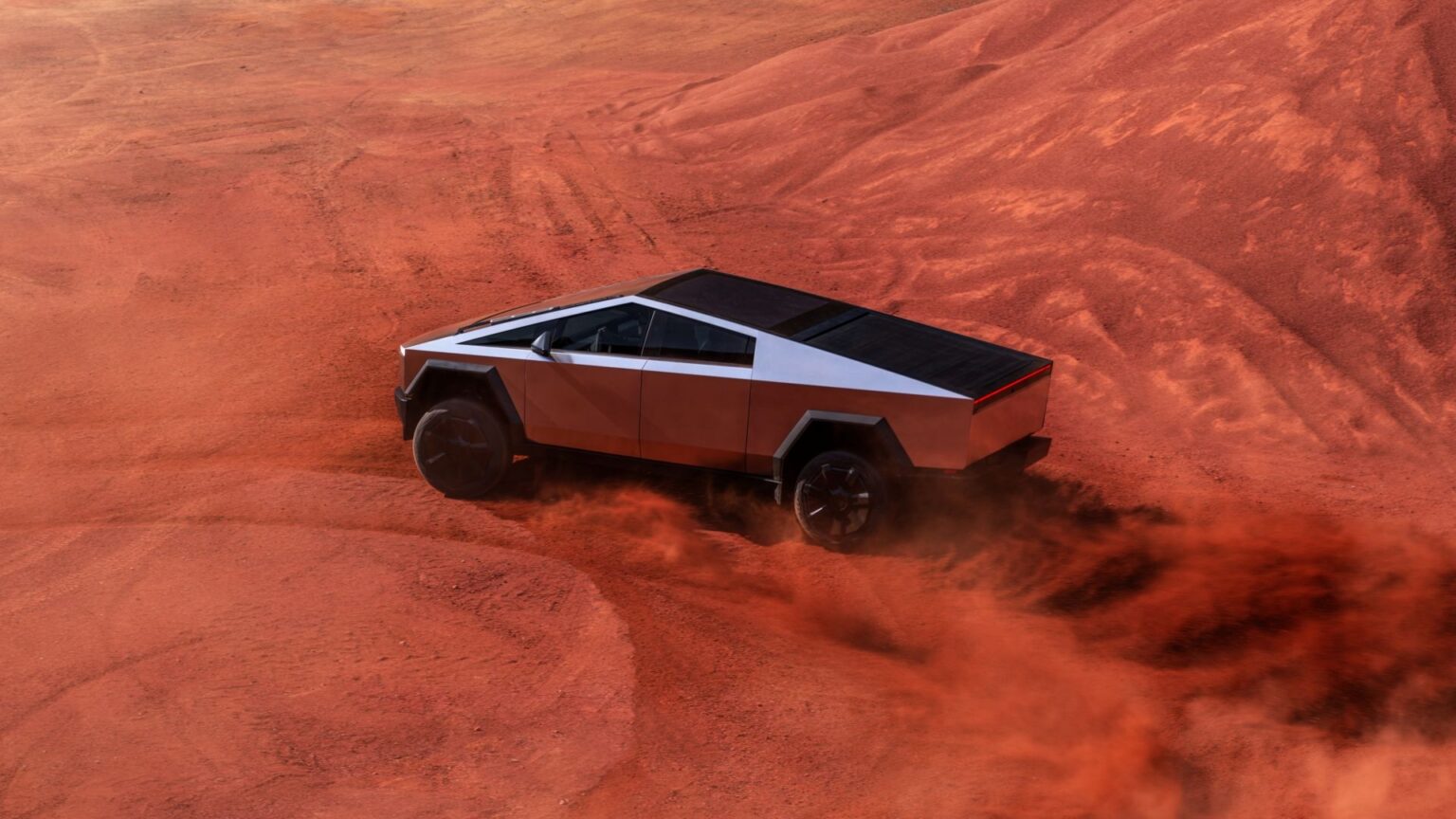Tesla has made some bold claims about its controversial Cybertruck. For instance, this unconventional all-electric pickup is supposedly fitted with “shatter-resistant armor glass,” a claim that was embarrassingly undermined when the company’s chief designer shattered the side windows on the concept model back in 2019. Tesla also seemed to suggest the vehicle’s stainless-steel bodywork is bulletproof, though the vehicle is not armored, and the caliber of rounds that can be stopped is questionable. Thanks to these “attributes,” the Cybertruck seems like a great vehicle for the military, and some are finally being purchased by the U.S. armed forces.
Ready… Aim… Fire!
Before company CEO Elon Musk starts jumping for joy – just two, yes, two Cybertrucks are being acquired by the Air Force, and probably not for any reason you’d expect. These pickups will not be used for transporting staff or pressed into logistics roles, rather, they’ll essentially be used for target practice.
As reported by The War Zone, the U.S. Air Force is acquiring 33 different vehicles, including a range of pickups, SUVs, and sedans. This will include a duet of Cybertrucks. All this machinery will be sent to the White Sands Missile Range (WSMR) in New Mexico, where it will be used as targets for precision-guided weapons.
But why include the Cybertruck? According to The War Zone, “The service says it needs these vehicles for this purpose specifically because of the prospect of unspecified adversaries driving around in them in the future,” which makes sense. Stainless steel is a tough, durable material that is rarely used in vehicle bodies.
This smattering of cars and trucks will reportedly support the U.S. Special Operations Command’s (SOCOM) Stand Off Precision Guided Munitions (SOPGM) program. Accordingly, testing will include air-launched precision-guided weapons like the AGM-114 Hellfire and AGM-176 Griffin missiles as well as the GBU-69/B Small Glide Munition, among others.
Changing Threats Call For Changing Tests
According to documentation obtained by The War Zone, “Testing needs to mirror real-world situations. The intent of the training is to prep the units for operations by simulating scenarios as closely as possible to the real-world situations.” Certain groups may start employing the Cybertruck, which has been found to resist damage better than conventional vehicles with painted steel or aluminum bodies when subjected to major impacts.
Still, it’s curious that the military is taking the Cybertruck as seriously as it is. This vehicle is really only sold in the U.S. and Canada, meaning it’s pretty unlikely this Tesla will show up on distant battlefields, a role that’s usually reserved for older Toyota pickups. Also, the automaker hasn’t sold that many of these vehicles. Some estimate that barely 46,000 of these electric pickups have found new homes. Ford practically delivers that many F-150s every 20 minutes. Charging also raises questions. It’s easy to transport and store gasoline and diesel, but how you replenish an EV’s battery pack in the middle of the desert or deep in a jungle remains to be seen.
The Tesla Cybertruck’s stainless-steel bodywork is unique in the automotive industry and highly durable. In the unlikely event this vehicle is ever pressed into service by enemies or rebel forces, the U.S. military needs to be ready to counter the threat, which is why this testing – while ridiculous sounding – is still important.
Read the full article here


